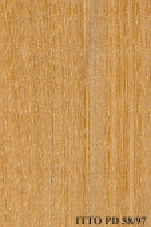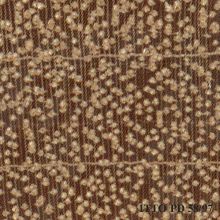
BALAU (Shorea maxwelliana)
Trade Name
Balau
Scientific Name
Shorea maxwelliana King
Family
Dipterocarpaceae
Common Names
Bangkirai (Indonesia); Selangan batu (Sarawak); Pooti (Indonesia); Selangan batu (Sabah); Aek (Thailand); Pa-yom dong (Thailand); Chan (Thailand); Kedawang (Indonesia); Benuas (Indonesia); Brunas (Indonesia); Agelam (Indonesia); Yakal (Philippines); Balau simantok (Malaysia); Balau kumus (Malaysia); Sengkawan darat (Malaysia); Selangan batu (Indonesia); Damar laut (Malaysia); Balau (Germany); Balau (United Kingdom); Balau (France); Kumus (Malaysia); Balau (United States of America); Ca-chac (Vietnam); Sen (Vietnam); Phchek (Cambodia); Gisok (Philippines); Balau (Sweden); Balau (Italy); Balau (Spain); Thitya (Myanmar); Sal (India); Malayakal (Philippines); Balau (Netherlands)
Scientific Name Synonyms
Shorea utilis King; Shorea barbata Brandis; Shorea alba Ridley; Balanocarpus ovalifolius Ridley
Description Of The Tree
Botanical Description
It is a medium-sized to large tree up to 50 m tall, with boles up to 160 cm in diameter, and prominent buttresses up to 4 m high.
Natural Habitat
Shorea maxwelliana is one of the main balau timber trees, occurring locally in some abundance on low ridges, on well drained soils, up to 700 m of altitude.
Wood Identification
Anatomic Description Of Wood
Vessels per mm2 6 to 10 (medium). Wood diffuse porous. Vessels solitary and in short radial multiples. Tyloses common. Tangential diameter of vessel lumina 200 micras or more (large). Vestured pits. Vessel-ray pits coarse in marginal rows. Simple perforation pla Apotracheal axial parenchyma diffuse and/or diffuse in aggregates. Axial parenchyma thin vasicentric. Occasionally axial parenchyma aliform. Occasionally axial parenchyma in marginal or in seemingly marginal bands. Axial parenchyma in discontinuous tangential Rays more than 10 per mm (abundant). Rays 1 to 4 seriate. Prismatic crystals in the ray cells. Body ray cells procumbent with one row of upright and/or square marginal cells (Kribs-III). Non-septate fibers. Fibers with simple to minutely bordered pits.
-
 Wood Macro Photo Radial Plane
Wood Macro Photo Radial Plane
-
 Wood Micro Photo Of Transversal Section
Wood Micro Photo Of Transversal Section
Availability
Cites Status
Unrestricted
General Wood Description
Odor
The dry timber has nutmeg odor.
Color
The sapwood is pale green to light gray. The heartwood is yellowish to grayish brown when fresh, becoming light brown to brown after exposure.
COLOR INDEX (1=Black, 7=Light yellow,white)
5
Grain
It is straight, occasionally interlocked.
Texture
Texture is usually fine to medium. The vessels are often blocked with tyloses.
Luster
The heartwood is somewhat lustrous.
Natural Durability
It is considered as very durable to durable.
Natural durability index (1= Very high durability, 7=Vey low durability)
2
Resistance To Impregnation
It is an impermeable wood, with very low absorption of preservatives.
Wood Physical Properties
Basic Density or Specific Gravity (O.D. weight/vol. green) (g/cm³)
0.84
Air-dry Density (Weight and volume at 12%MC) (g/cm³)
0.97
Total shrinkage Tangential (Saturated to 0%MC) (%)
6.7
Total shrinkage Radial (Saturated to 0%MC) (%)
3.4
Drying Defects
Ease of Drying: Drying is very slow and difficult to perform; defects are frequent. Drying Defects: Risks of distortions.
Recommended Dry Kiln Schedule
UK-G; JP-8; US-T8-B3
Dimensional stability ratio (Total Tangential Shrinkage %/Total Radial Shrinkage %)
1.9
Wood Chemical Properties
Wood Mechanical Properties
Bending Strength (MOR),12%MC (kgf/cm²)
1447
Stiffness (MOE) 12%MC (kgf/cm²)
204819
Compression parallel to fiber 12%MC (kgf/cm²)
744
Workability
Sawing
It is easy to cut if the saw is stellite tipped.
Blunting Effect
This wood is reported to have a severe blunting effect on the saw-teeth.
Machining
It is easy if special sharp cutters are used, but severe difficulties are reported if interlocked grain is present.
Planing
Planing properties are rated as good to slightly difficult.
Boring
In green condition, it is easy to bore, but boring of air-dried timber is slightly difficult.
Nailing
Pre-boring is recommended to avoid splitting.
Gluing
It has a good behavior in gluing.
Finishing
This species is reported to take a smooth finish.
REFERENCED USES
End Uses Summary
EXTERIOR GENERAL, bridges, stakes posts, crossties, HOUSING GENERAL, flooring, CONTAINERS, cooperage, truck bodies, NAVAL CONSTRUCTION, port pillar, port storage
Exterior General
- 1 - Tabela de resultados de ensaios fisicos e mecanicos
Bridges
- 2 - 25 madeiras da amazonia de valor comercial, caracterizacao, macroscopica, usos comuns e indices qualificativos
Stake Posts
- 5 - Propriedades fisicas e mecanicas da madeira e do contraplacado de Pinus elliottii
Crossties
- 8 - Maderas latinoamericas. III, Podocarpus standleyi ,Podocarpus oleifolius, Drims granadensis, Magnolia poasana y Didymopanax pittieri
General Housing
- 10 - Silica in Timbers
Flooring
- 14 - Handbook of Hardwoods
Containers
- 50 - Properties of imported tropical woods
Cooperage
- 51 - Recopilacion de propiedades mecanicas de maderas creciendo en Chile
Truck Body
- 53 - Timbers of the New World
Shipbuilding
- 55 - Tropical Timber Atlas of Latin America
Port Pillar
- 61 - Manual de Diseño para Maderas del Grupo Andino
Port Storage
- 62 - Estudio Tecnológico de Maderas del Perú (Zona Pucallpa) Vol I
Please Provide Information To View Producer Information